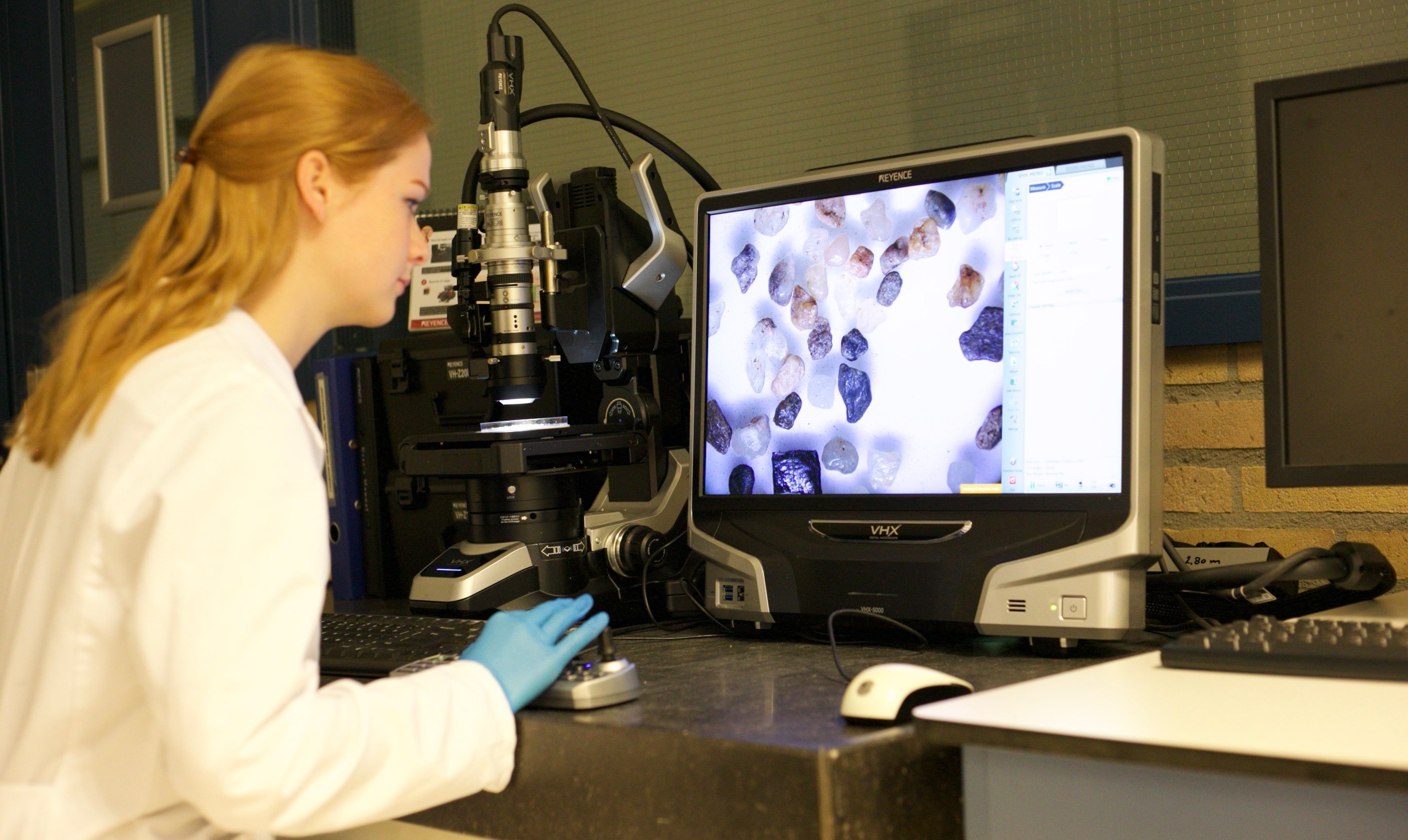Microscope
Digital microscopes incorporate observation, image capture, and measurement capabilities while providing an on-screen interface for viewing objects. Real-time 2D measurements can be performed and profile, height, and volume data on 3D images can be obtained. Digital microscopes provide more information and are easier-to-use when compared to conventional imaging and measurement systems, which allows users to make better decisions in less time.

A digital microscope is a variation of a traditional optical microscope that uses optics and a digital camera to output an image to a monitor, using software running on a computer. A digital microscope often has its own in-built LED light source, and differs from an optical microscope in that there is no provision to observe the sample directly through an eyepiece. Since the image is focussed on the digital circuit the entire system is designed for the monitor image. The optics for the human eye are omitted.
A primary difference between a stereo microscope and a digital microscope is the magnification. With a stereo microscope the magnification is found by multiplying the lens magnification by the eyepiece magnification. Since the digital microscope does not have an eyepiece, the magnification cannot be found using this method. Instead the magnification for a digital microscope is found by how many times larger the sample is reproduced on the monitor. Therefore, the magnification will depend on the size of the monitor. The average digital microscope system, which has a 15" monitor, would result in an average difference in magnification between an optical microscope and a digital microscope of about 40%. Thus the magnification number of a stereo microscope is usually 40% less than the magnification number of a digital microscope.
Since the digital microscope has the image projected directly on to a digital camera, it is possible to have higher quality recorded images than with a stereo microscope. With the stereo microscope, the lenses are made for the optics of the eye. Attaching a digital camera to a stereo microscope will result in an image that has compromises made for the eyepiece. Although the monitor image and recorded image may be of higher quality with the digital microscope, the application of the microscope may dictate which microscope is preferred.[
Most of the high-end digital microscope systems have the ability to measure samples in 2D. The measurements are done onscreen by measuring the distance from pixel to pixel. This allows for length, width, diagonal, and circle measurements as well as much more. Some systems are even capable of counting particles.
3D measurement is achieved with a digital microscope by image stacking. Using a step motor, the system takes images from the lowest focal plane in the field of view to the highest focal plane. Then it reconstructs these images into a 3D model based on contrast to give a 3D color image of the sample. From these 3D model measurements can be made, but their accuracy is based on the step motor and depth of field of the lens.
2D and 3D tiling, also known as stitching or creating a panoramic, can now be done with the more advanced digital microscope systems. In 2D tiling the image is automatically tiled together seamlessly in real-time by moving the XY stage. 3D tiling combines the XY stage movement of 2D tiling with the Z-axis movement of 3D measurement to create a 3D panoramic.